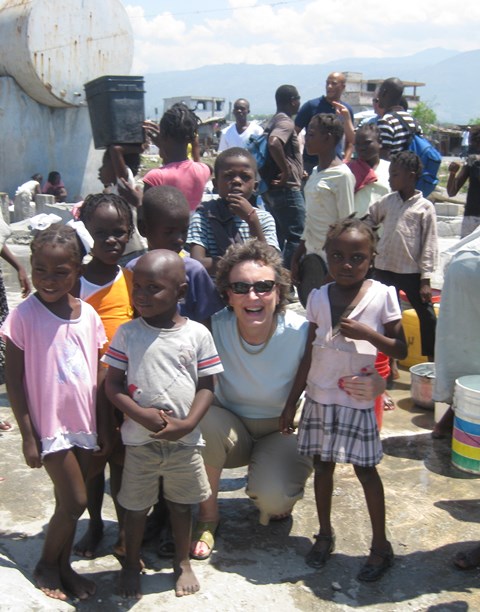They say a picture is worth a 1,000 words.
Photos capture an image. They evoke emotion. They tell a story. Deciding which photos to use depends upon the messages we want to convey. How do we use the power of photography to honor the subject and the people, while, at the same time, motivating those who are looking at the images to take action or contribute to a cause?
 The staff and others connected with Pure Water for the World have had recent conversations about the photos selected for our end of year appeal. This year’s campaign focuses on raising funds to provide clean water to 1,000 homes in Cité Soleil, Haiti – the poorest neighborhood in the western hemisphere. The challenge is to find appropriate photos which best portray the need and motivate people to get involved and give. We feel it is essential to select photos that share the reality of Cité Soleil, while honoring and respecting the dignity and humanity of the Haitian people.
The staff and others connected with Pure Water for the World have had recent conversations about the photos selected for our end of year appeal. This year’s campaign focuses on raising funds to provide clean water to 1,000 homes in Cité Soleil, Haiti – the poorest neighborhood in the western hemisphere. The challenge is to find appropriate photos which best portray the need and motivate people to get involved and give. We feel it is essential to select photos that share the reality of Cité Soleil, while honoring and respecting the dignity and humanity of the Haitian people.
Too many times the photos of Haiti display half-naked children, rows of hovels, or acres of trash. These photos capture the worst of the worst and portray a horrendous situation. But, Haiti is much more than the travesty of severe poverty.
Yes, Haiti is a poor country and has many challenges. Yet, it is a real place where real people have dreams and hopes. Haiti is a beautiful country, where people get up in the morning to go to work, and children go to school. Haitians have a tremendous spirit and joy for life.
Yes, Haiti’s poverty grabs us, because most of us have never seen such conditions and cannot imagine what life would be like there. But Haitians deal with these conditions and still share joy and smiles.
So, why are some people compelled to snap pictures of an adult openly defecating or picking though mounds of garbage for food? Remember, these people do not have the luxury of a toilet or money to buy food. Is this voyeurism or reality? Do those taking these photos ask permission? Probably not, because I am pretty sure that no Haitian would want that to be the message they convey to the outside world. These types of photos miss the real message and the spirit of the Haitian people.
When I first went to Haiti, these images were burnt into my soul. And if I had a camera, I would probably have taken similar pictures, because words alone cannot convey the scenes. It was when I got to know the people that I saw a different Haiti. Yes, they live in a country with abject poverty. But, that does not define them. It’s the dignity and strength of Haiti’s people that needs to be communicated.
In writing this, I reflected upon my first trips to Haiti and Honduras. There is something that draws those of us from developed countries into the harshness of the poverty of underdeveloped areas. It overwhelms us. We feel fear. We feel sorrow. We sympathize. We struggle to comprehend it all. Deep inside, if we are honest, most of us probably feel relief that it is not our reality. And in that, we struggle to see the underlying beauty.
When leaving the countries after the first few trips, I went through a myriad of emotions. But what I left with was a heart filled with their resiliency, their strength, their joy. I deeply admire their perseverance, their continued pursuit of hopes and dreams, their ability to find joy in their days and aspirations for their futures.
In selecting photos for this campaign, our goal was to show the hope and dreams of Haiti. I want the staff in Haiti to be proud of the work that Pure Water does when they see the photos. Pure Water wants to portray the opportunity for health and hope to our donors and supporters, of a people that have dignity and deserve our respect. Haitians do not want to be seen as having despair or being in need of pity. While we may not always get it right, we are striving to have our photos reflect the deep respect we have for the people we serve.
